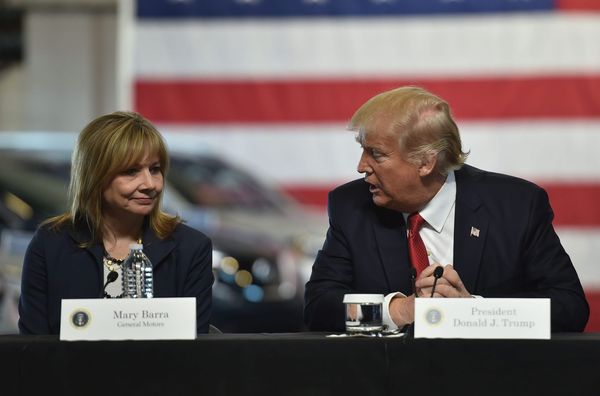Another hurricane season begins after two of the most devastating seasons in recent memory, particularly for my home state of Louisiana.
On a recent trip back, as my flight descended into the New Orleans airport, I saw countless homes with blue tarps covering their roofs nine months after Hurricane Ida left a path of destruction from Louisiana’s bayou region to New York. People are staring down another season as they rebuild from those prior.
Ida, like Hurricanes Laura, Delta and Zeta, all rapidly intensified before landfall, fueled by the warm waters of the Gulf of Mexico. Climate change is making hurricanes stronger, which is particularly concerning for communities in their path.
So how can we prepare?
Growing up in Louisiana, we always made annual storm season preparations, including getting an emergency kit, planning evacuation routes and closely following updates from meteorologists and emergency preparedness officials.
Similarly, governments need plans for how to address the many flood threats that communities along coasts and watersheds face, including more intense hurricanes, sea-level rise and extreme rainfall.
Following Hurricanes Katrina and Rita, Louisiana developed a science-based, comprehensive Coastal Master Plan to protect communities, as well as cultural, economic and environmental resources, from coastal flooding. The plan, updated every six years with new science, accounts for a range of scenarios over a 50-year timespan.
As a result, Louisiana has secured more than $21 billion for large-scale coastal restoration and protection projects that reduced damages from prior storms and help the region better confront future ones. Louisiana will invest an unprecedented $1.3 billion in coastal projects over the next year alone with more than 114 projects moving forward.
Florida, New Jersey and Virginia recently developed similar plans. Doing so should be a requirement for any coastal state given images of homes lost to the sea filling our newsfeeds and a recent NOAA report indicating seas will rise a foot by 2050.
It should also be done at the federal level. Led by a newly created federal chief resilience officer, a comprehensive plan for addressing our nation’s flood crisis would marshal a whole-of-government approach to implement holistic, near- and long-term solutions to protect communities.
The plan should start with a federal flood disclosure mandate, so homeowners and renters can understand their flood risk today — and in the future — and take appropriate actions to mitigate it.
It should prioritize natural solutions, such as oyster reefs, restored wetlands and barrier islands, which provide a vital buffer from storms and sea-level rise, and, according to a recent study, $450 billion in protection and 4,600 lives saved annually. Unlike seawalls and levees, natural solutions are faster to build, less expensive and provide added benefits from wildlife habitat to quality-of-life improvements.
The plan should also recognize that hurricanes, flooding and other disasters do not affect all people equally. From Katrina to Ida, hurricanes have a disproportionate effect on under-resourced communities, making it more difficult for these communities to recover.
And when disaster strikes, government leaders must mobilize recovery funding as quickly as possible, so communities are not waiting years to rebuild and can be more protected and resilient in the future.
Through efforts like FEMA’s Building Resilient Infrastructure and Communities program, the federal government must direct resources to communities of greatest risk and greatest need. It should also account for how flooding affects every aspect of our lives, from our homes to our jobs to our mental health, and ensure solutions appropriately match these needs. Most important, government leaders should develop solutions with and within communities rather than in some distant capitol or agency office.
Beyond hurricanes, few areas of our country are immune to the effects of the climate crisis. A federal chief resilience officer can extend lessons learned from a national coastal resilience plan to address disasters ranging from wildfires to drought.
While we cannot stop the storms from coming, we can act proactively to save lives and reduce their effect. We must work aggressively to reduce emissions to avoid worsening scenarios of stronger hurricanes, sea-level rise and extreme weather.
Additionally, the Infrastructure Investment and Jobs Act provides an unprecedented opportunity for governments to invest in a more climate resilient future. These investments make financial sense as every $1 invested before disaster saves $6 in disaster recovery.
I sincerely hope people are spared this hurricane season, but hope is not enough. We need bold action at every level of government to understand risks and work with people in vulnerable areas to reduce them before the storms come.
____
ABOUT THE WRITER
Natalie Snider is associate vice president of Climate Resilient Coasts and Watersheds at the Environmental Defense Fund. She wrote this for InsideSources.com.







